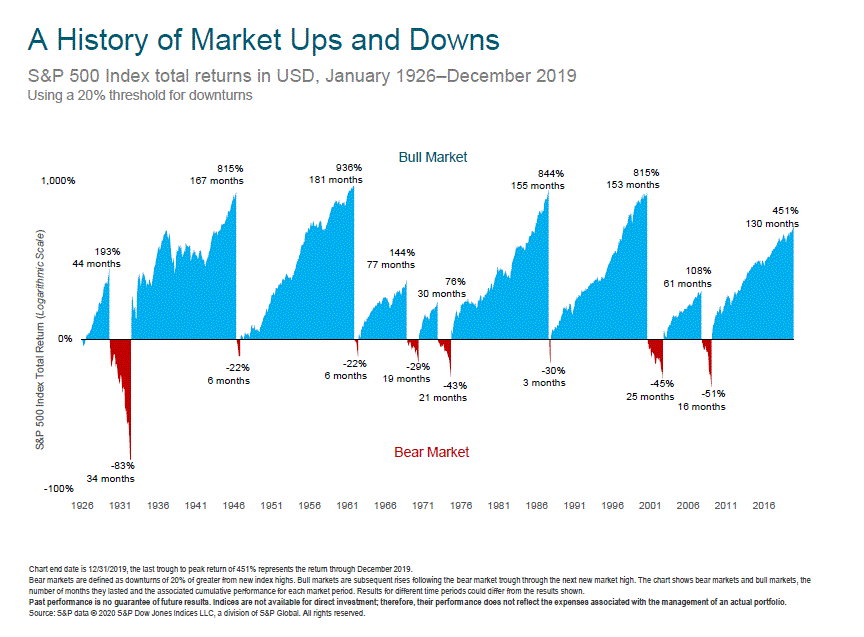The (Not So) Trivial Pursuit of Financial Contentment
Here’s some fun trivia for you to share with your friends as we head into the weekend:
Did you know you have to count to 1,000 before you’ll find the letter “a” in a spelled-out number?

We thought you could use that break from the deluge of mid-year news events and stock market commentaries on 2020’s bipolar extremes. The general theme has been how quickly global markets sold off and came back – even as economic and sociopolitical headlines continued to stoke bonfires of ongoing upheaval.
And the year is only half over. > SEE MORE

Posted by:
Waypoint Wealth Management
How Can “Sequence of Return” Help or Harm You?
Clearly, there is a lot to think about when planning for retirement. While we have a degree of control over many of the choices involved, there’s one big wild card called sequence risk.
Sequence risk is the risk that you’ll encounter negative investment returns in early retirement. This is an important consideration, because the random sequence – or order – in which you earn your returns early in retirement can have a significant impact on your lasting wealth. Simply put, a retirement portfolio that happens to experience positive returns early in retirement has a better chance to outlast an identical portfolio that must endure negative returns early in retirement (if withdrawal amounts are not adjusted) … even if their long-term rates of return end up the same.
Since nobody can predict which return sequence they’ll experience early in their retirement, every family should prepare for a range of possibilities with their retirement planning. > SEE MORE

Posted by:
Waypoint Wealth Management
What Has Historically Followed A Time Like This?
Having patience can be challenging when recent downturns have occurred. But the reality is that some of the biggest innovations (and opportunities) arise out of difficult times. And when it comes to investing, all we have is what those opportunities might bring us in the future. This is why investing can be hard when focusing on short-term movements for your long-term retirement plan.
We can’t go back in time and change the past, but we can return to the evidence, and review what has occurred each time. And while not perfect or any guarantee, we can put the odds in our favor to grow over time.
Our partners at Dimensional put this visual together (below) showing how returns have averaged coming out of downturns of -10%, -20%, and -30%. Please take a look as a reminder of how having a longer-term outlook has helped investors in times like these – to not only stay on course but also to be confident in what can lie ahead. > SEE MORE

Posted by:
Waypoint Wealth Management
How Is A Horror Movie Like The Economy And The Markets?
I am not a big fan of scary movies. You know, the ones with the guy in the hockey mask or the girl with the head-spinning thing; that’s just not for me. If I’m honest even just typing those words made me cringe at the memories of seeing those scenes. But there’s an analogy going on between those films and the economy and the stock market. Bear with me, and I’ll explain (hint: it’s not scary).

In those movies, there is a point in which you realize something really, really bad is about to happen. It’s that “oh boy, this is going to be very terrifying” type of moment. Physiologically, some people might experience an increase in heart rate, dryness of mouth, eyes watering or goosebumps. The emotion known as fear is palpable, and we’re anticipating something but we have no idea what to expect.
Some would say (I can’t) that the best horror film keeps this feeling “alive” in you for as long as possible–drawing you in, and keeping you engaged and fearing the absolute worst. Then there is that point that we’re let in. We see the monster, or the face, or the ‘thing’ coming out of the TV and it’s in front of us. It’s at this point that something begins to change. It might be scary, but we know what we’re facing now–it’s in front of us, and there’s almost a sigh of relief as we begin to adapt to a new phase of the film. Some might say “this isn’t really that bad” and the heart rate returns to a more normal pace and the goosebumps subside. Things still need to be dealt with in the movie, but we at least know what we’re dealing with.
How are the economy and the stock market similar to this? > SEE MORE

Posted by:
Pete Dixon, CFP®
Partner and Advisor
A Calm Reflection On The Markets
Many of you may prefer to tune out the financial news, and you may not need much reassurance when we experience bear markets. But the biggest worry that we have is that a client is worried; if that is the case with you please don’t hesitate to call to go over your investment plan.
The most common question we get during times like these is: “your phone must be ringing off the hook.” The truth is, that it is not. That doesn’t mean that we’re less busy in times like these. But we do think the quiet is a testament to not only the planning we’ve done and (hopefully) the perspective we’ve provided you, but also that you’ve placed your trust in us. So thank you for that trust—we don’t take it lightly—and we really mean that we are here for you if you want to call or set up an appointment.
So, another long bull market has come to an end (for now). This happens when a market declines by 20% from its recent high watermark. And, while we tend to focus on the negative aspect (the -20% or more), which we completely understand, we recently came upon the following picture that shows in detail the length and scale of ALL the previous bull markets (and bear markets). What is very evident, is that over time the blue/positive/upturn/bull markets dominate the red/negative/downturn/bear markets.
You can click on the following link to see a larger version of this image: Market Declines and Volatility

This, of course, doesn’t mean that downturns are any less difficult when we’re experiencing them. But sometimes visual evidence can help a long-term investor (like you) remember why we invest in the first place. The positive growth outlasts the negative (every time so far) and the net outcome is expected growth. We don’t know when the next upturn will begin. But staying invested means that we’ll be there when it does.
Past performance is no guarantee of future results. Indices are not available for direct investment; therefore, their performance does not reflect the expenses associated with the management of an actual portfolio.

Posted by:











